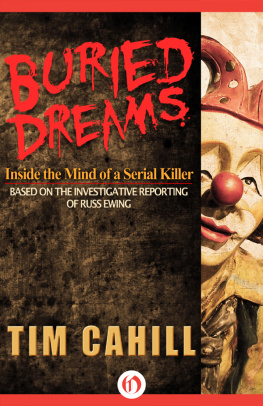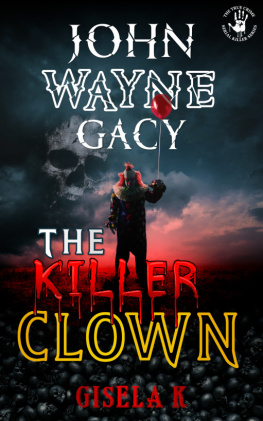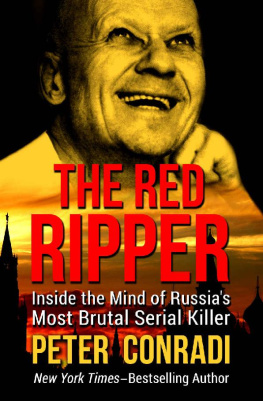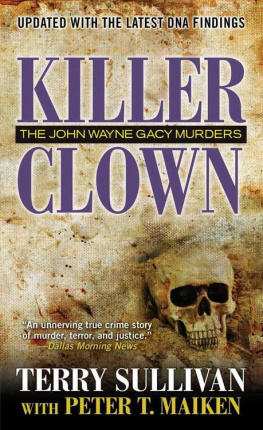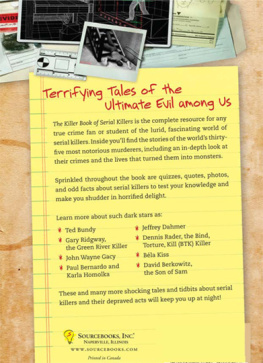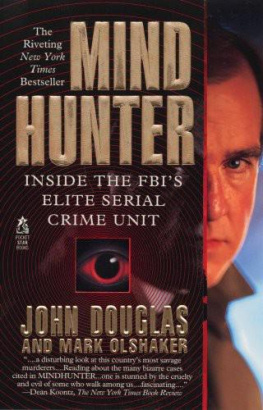All rights reserved, including without limitation the right to reproduce this ebook or any portion thereof in any form or by any means, whether electronic or mechanical, now known or hereinafter invented, without the express written permission of the publisher.
This is a work of fiction. Names, characters, places, events, and incidents either are the product of the authors imagination or are used fictitiously. Any resemblance to actual persons, living or dead, businesses, companies, events, or locales is entirely coincidental.
Copyright 1986 by Tim Cahill and MC Productions, Inc.
This edition published in 2014 by Open Road Integrated Media, Inc.
INTRODUCTION
A HOT SEPTEMBER MORNING on the north side of Chicago. Russ Ewing and I were crouched over double, working with trenching tools under a three foot high ceiling and sweating heavily: two men digging in the mud of a crawl space under the porch of a north side home, hoping that we wouldnt find what we half expected to uncover. Russ and I had reason to believe the body of a murdered boy was buried there in the hard-packed, yellow-brown mud.
We were partners, the two of us, working together on the story of John Wayne Gacy, Americas most prolific convicted mass murderer. Ewing is a reporter for WLS-TV in Chicago: a tough soft spoken man whose collegiate degreeunusual for a newsmanis in psychology.
In 1977, Ewing had done a report on missing children in Chicago. It seemed there were a disproportionate amount of young men, teenagers for the most part, reported missing from a neighborhood called Uptown. Russ Ewing didnt know it then, but he was working on the story of John Wayne Gacy. A year later, Gacy was arrested, and charged with the murders of 33 young men. He had buried most of the victims in the crawl space under his house. Russ Ewing, who had done stories about several of the missing boys whose bodies were found in the wet mud under Gacys house, felt as if he knew those boys, and the Gacy story became a very personal one for him.
Reporting on the early stages of the murder trial, Ewing said, on camera, that John Wayne Gacy must be considered innocent until proven guilty. Mr. Gacy, who collected clippings about himself and monitored news reports compulsively, apparently began to believe, on the strength of that statement, that the newsman was somehow on my side. He phoned Russ Ewing. The first contact led to prison interviews, protracted correspondence, and hundreds of dollars worth of collect calls from Gacy to Ewing.
In 1981, after working on the Gacy story, on and off, for four years, Ewing agreed to turn his information and the names of his contacts over to me for the purpose of writing a book. Russ would function as a consultant, providing information I might be unable to develop for myself. The actual writing was, by agreement, entirely my own.
A reporter is interested in facts. Early on, I discovered that, in addition to factual truth, I would be dealing with complex emotional and psychological nuancesinformation not easily reported in a two-minute news segment. During the next three and a half years, Russ and I worked together on the project, developing precisely this sort of information, retracing steps in his four year long investigation, speaking to people who had known Gacy both as a free man and a convict.
Mr. Gacy, for his part, provided information, dates, places, and the names of people we might contact. His motivation was muddy, at best, and he professed confusion concerning the crimes. At one point, Mr. Gacy suggested that there may have been more victims than the police knew about. Maybe, Mr. Gacy said, he didnt actually commit any murders: perhaps they had been done by young employees of his contracting company. He recalled some of those employees working on his north side home, in the crawl space under a porch. The young men had dug a hole too deep for the work they were doing, and Gacy had seen it. Perhaps this was a grave. Perhaps there was a body buried there.
Mr. Gacy recalled the addresshe has an extraordinary memory for such detailsand described the house. Russ Ewing and I obtained permission from the owner to dig up the crawl space under his porch. Sometime during the third hour of work, we uncovered something ominous. It looked, in the dust, like the back of a mans head. There was an odor of death that drove us from the crawl space.
Russ had three important telephone numbers in his notebook. They were written down in the precise order: Coroner, cops, camera crew.
Do we call? I asked Russ.
Lets be sure, he said.
We put on painting masks to mute the smell. Kneeling by the hole, we brushed away the dust, careful not to destroy evidence. The hair didnt seem to be human. It had a strange, coarse texture, and its color was odd: orange with streaks of black. I cleared away a bit more of the dirt with my shovel. We had uncovered a calico cat.
Thank God, I said. Only a cat.
Later Ewing told me hed felt the same emotions that I had. There was horror at the core of it, of course, and revulsion, all of this mixed in with a sense that wed been had, that wed been blatantly manipulated. It was a combination of emotions I became entirely familiar with in the next few years.
You could almost hear him laughing down in that crawl space, I told Ewing.
I know, he said.
The reader should be aware at the outset that John Wayne Gacy has not and will not profit monetarily from this book. Nevertheless, Mr. Gacy has continued to talk with Russ Ewing and with other people who provided information to me. The latter sources are, by agreement, confidential. Why Mr. Gacy chose to cooperate with them, and with Russ Ewing, is a question I believe is fully answered in the narrative.
If the reader senses some uncertainty regarding motive here, it is because Mr. Gacy often contradicts himself, presents alternative explanations, or simply denies that he said something. Some psychologists and psychiatrists who have studied him think this tendency mirrors Mr. Gacys confusion, his underlying mental illness. Others state flatly that it is an attempt to obfuscate, to manipulate the listener, to feign insanity.
Whatever the case, John Gacy is a tireless talker. Sometimes he prefers to speak like a lout, and will litter the conversation with conscious double negatives, repetitive curses, and various tough-guy locutions. At other times, Mr. Gacy is positively pretentious in describing his own idealism. Almost simultaneously, he can play the sensitive victim, courageous enough to cry.
In analyzing what amounted to over 100 hours of interviews with Mr. Gacy, I concentrated on answering three questions. First, what did he actually doas opposed to what he said he did? How did he choreograph the killings, the central events of his life: was there significant ritual involved in the terrible danse macabre of death? Secondly, what was the facade that allowed him to literally get away with murder for almost six years? Finally, and most important, what was going on in his mind? How can such a man live with himself?
In constructing this book, I originally sought to find the real John Gacy. The idea was to subtract the lies, the misrepresentations, the false idealism. With the material available to me, I intended to identify internal contradictions, and work my way down into a solid core of truth. I was looking for a simple explanation. And yet... the more I studied Mr. Gacy, the more I came to realize that the apparent complexity of his personality defined him more accurately than any single theory I might formulate or propose. The real John Gacy is a creature composed of lies, internal contradictions, misrepresentations, and false idealism.

